Ted Kennedy and Chappaquiddick: A new film looks at the accident that ended a political dynasty
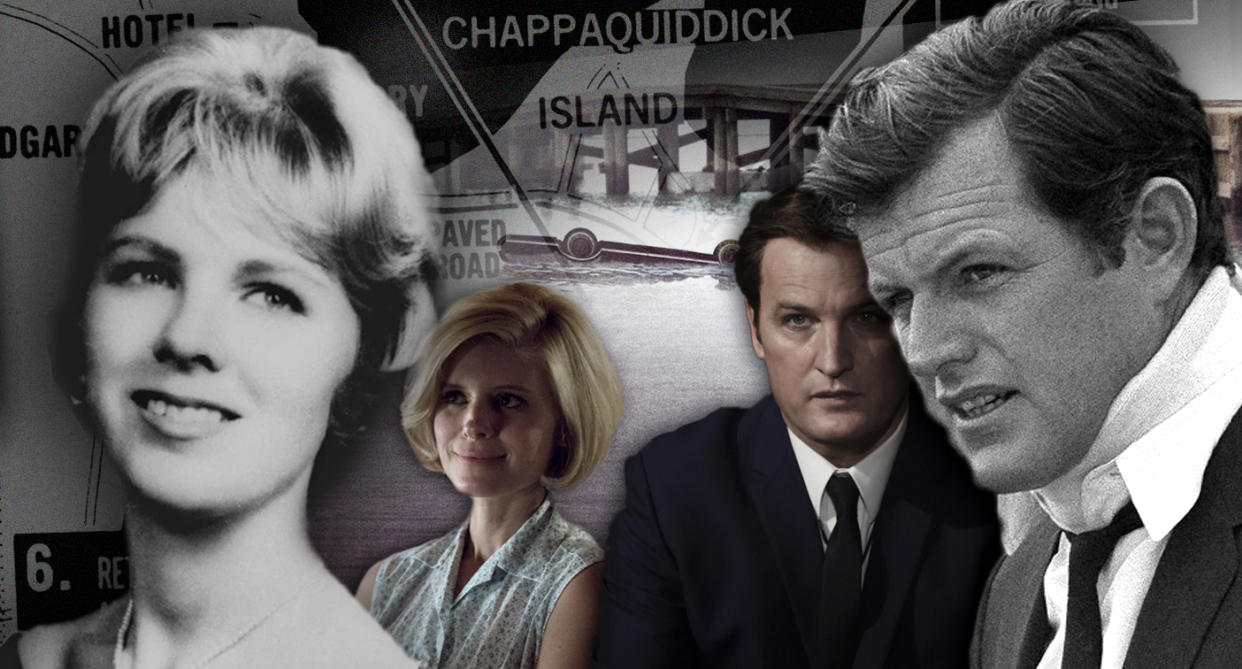
One of the great mysteries of 20th century American politics is being resurrected in a new film that takes its title from a byword for political and sexual scandal: Chappaquiddick.
The film, directed by John Curran, tells the story of the death of Mary Jo Kopechne, a young woman who died in Sen. Edward “Ted” Kennedy’s car after it crashed on a small island off Martha’s Vineyard in the summer of 1969. Those facts are among the few certainties in a decades-long mystery. With Kennedy a favorite at the time for the Democratic nomination for president in 1972, the shadow cast by Chappaquiddick may well have changed the course of American political history.
The conspiracy theories and innuendo dwarf the undisputed facts of the event. What’s known is that Kopechne, who was 28, and Kennedy, 37, were at a party for staffers from Robert F. Kennedy’s 1968 campaign on Chappaquiddick on the night of July 18, 1969. They were at a cottage on the island and at some point in the evening Kopechne (portrayed by Kate Mara) and Kennedy (Jason Clarke) left the party, with Kennedy driving his Oldsmobile 88. Kennedy’s car went off a narrow bridge leading to a private beach, overturned, and submerged in Poucha Pond. Kennedy returned to his Edgartown hotel on Martha’s Vineyard, where he briefly spoke to the manager of the Shiretown Inn at 2:25 a.m.
The next morning two fishermen found the car and called the authorities, who found Kopechne’s body still in the car in several feet of water. Kennedy returned to Chappaquiddick to make calls on a pay phone before heading to the Edgartown sheriff’s office to report the incident. Over the course of the next week, the senator from Massachusetts attended Kopechne’s funeral in Pennsylvania, pleaded guilty to leaving the scene of an accident (for which he received a suspended sentence) and gave a nationally televised address to the nation in which he asked his constituents to write letters and let him know if he should resign. Public opinion was positive enough that Kennedy stayed in office while prosecutors decided not to charge him with negligent driving or involuntary manslaughter.
Slideshow: Chappaquiddick: A tragedy that changed the course of American history >>>
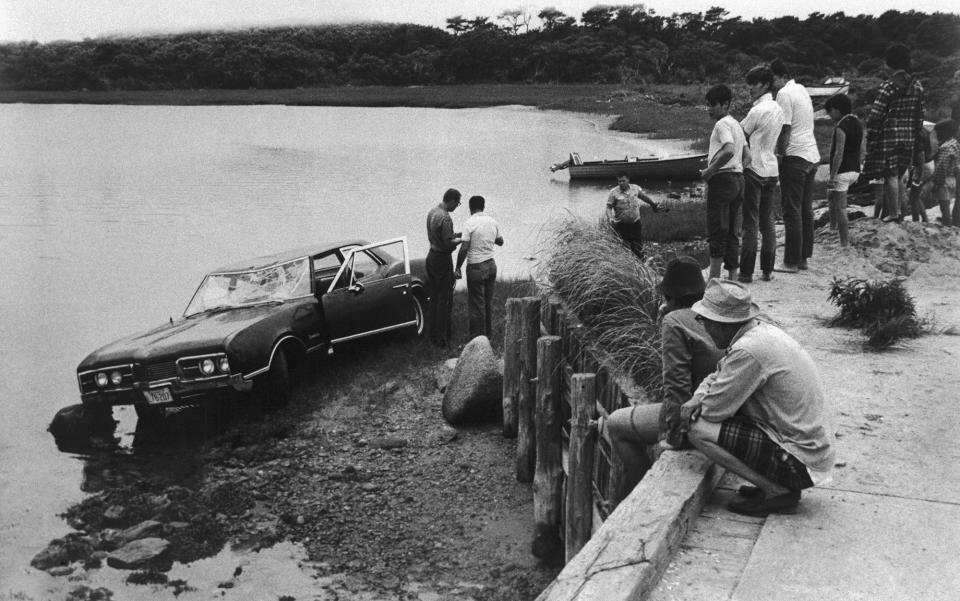
Everything else is subject to at least some level of interpretation, as certain elements of the story either changed over time or were never told. Here are answers to some of the questions viewers may have:
Where was Kennedy in his political career?
Kennedy was initially elected to the Senate at age 30, in a 1962 special election to fill the seat of his brother John, who had resigned after winning the presidency in 1960. He subsequently won a full term in 1964 with 75 percent of the vote and was considered a frontrunner for the Democratic nomination for the presidency in 1972 following the assassination of his other brother, Sen. Robert F. Kennedy, during the 1968 primary campaign. Sen. Edmund Muskie of Maine, a Democrat who would compete in the 1972 primary, said after Kopechne’s death that Kennedy could have had the nomination “for the asking,” but that “the controversy may have brought about an unfortunate shift in his fortunes.”
Six months before the crash, he had become the youngest majority whip in the history of the Senate. In his reelection campaign 16 months after the events of Chappaquiddick, his share of the vote went down to 64 percent, and he lost his position as whip in January 1971. He turned down an offer to be the vice presidential candidate on George McGovern’s ticket in 1972 and failed in an effort to unseat sitting President Jimmy Carter in 1980. He held his seat until his death in 2009, the fourth longest tenure of any U.S. senator. Members of the next generation of Kennedys have gone on to serve in Congress, but the once invincible Kennedy dynasty pretty much died at Chappaquiddick.
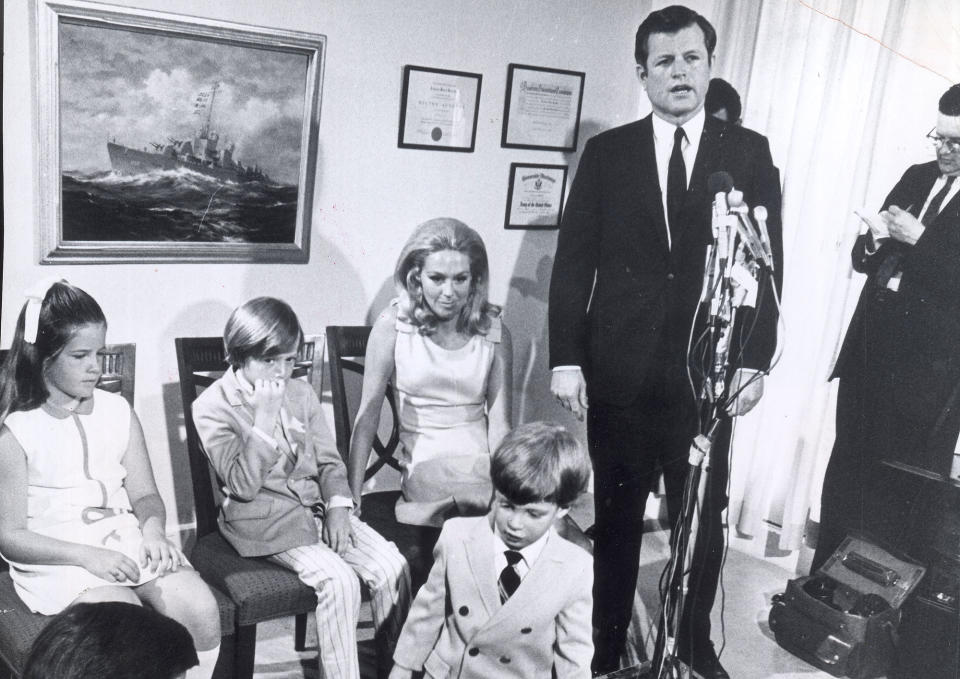
How did Kennedy get out of the car, and why did he wait so long to alert authorities?
Kennedy said in his official statement and at the inquest that he didn’t remember how he got out of the car, but that he made multiple attempts to save Kopechne, fighting against a strong current. He attributed his actions in the following hours to shock, exhaustion and a concussion.
Kennedy said he brought two friends from the cottage for unsuccessful efforts to rescue Kopechne. But on the walk back to the cottage he would have passed a house where he could have called for help. After the failed attempts, Kennedy told the inquest he didn’t call for further help because he assumed Kopechne had already drowned. Kennedy claims he then swam the channel back to Edgartown, where he was seen by a hotel employee at 2:25 a.m. The Shiretown Inn manager said that Kennedy was dressed in a suit jacket and slacks but looked “distressed.” The next morning, Kennedy talked to friends and made calls from a pay phone before going to the police station around 10 a.m.
Why were Kopechne and Kennedy in the car alone?
Kennedy’s chauffeur, Jack Crimmins, had remained at the party at the cottage. Kennedy said he was driving Kopechne to the Edgartown ferry but took a wrong turn. That claim has been met with skepticism since the moment it was given in an official statement to the police Saturday morning, July 19. The road to the ferry was paved and went off to the left; Kennedy turned right, past a drop of several inches and onto a dirt road leading to the bridge. Across the bridge was a private beach that Kennedy, Kopechne and others had visited earlier in the day.
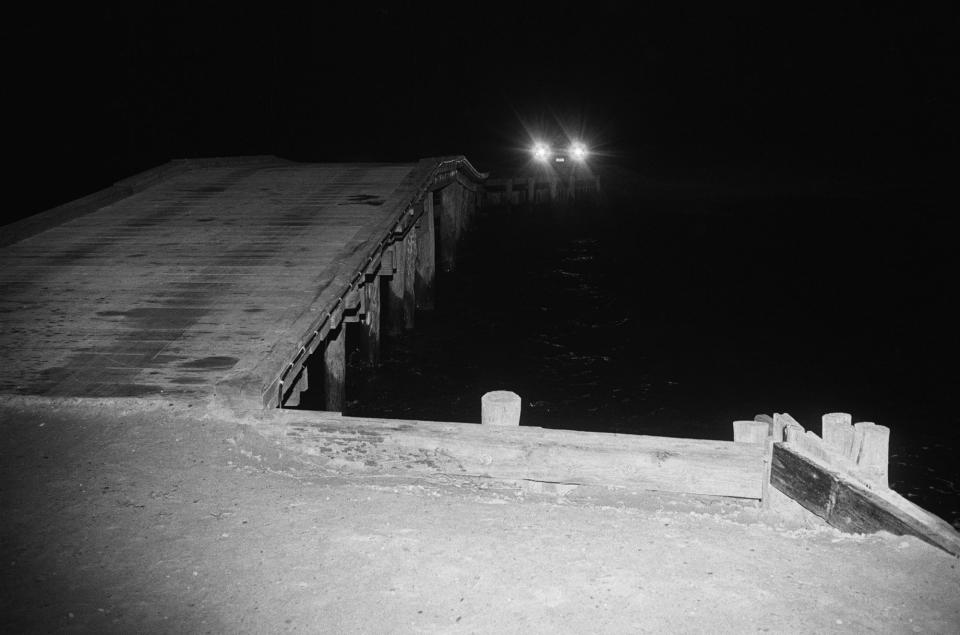
The timing of events also cast doubt on Kennedy’s account. The last ferry to Edgartown was at midnight, but Deputy Sheriff Christopher Look said he saw Kennedy’s car at 12:40 a.m. Sylvia Malm, who was renting a home 150 yards from the Dike Bridge, said she was reading until midnight the evening of the accident, with an open window facing in the direction of the bridge, and heard nothing. There has been speculation ever since that Kennedy and Kopechne were heading for a tryst. The senator, who was married with three children at the time, was a known womanizer but denied any “immoral conduct” with Kopechne.
Was Kennedy drunk at the time of the accident?
Kennedy claimed he only had a “couple” of drinks the night of the accident, but as with his womanizing, the senator’s reputation as a heavy drinker preceded him. Witnesses reported Kennedy drinking heavily earlier in the day after a sailboat race, and there was a large amount of booze purchased for the cottage gathering, although attendees claimed that neither Kennedy nor Kopechne drank much that night. Those attendees — mostly young female staffers who had worked on the RFK campaign and middle-aged, married men — left the cottage the morning after the accident, before they could be questioned by police. If Kennedy was drunk when the car went off Dike Bridge, it would possibly explain his reluctance to immediately call the authorities to the scene.
As for Kopechne, a blood test taken after her death showed her blood alcohol content to be 0.09. This would be just above the legal limit of 0.08.
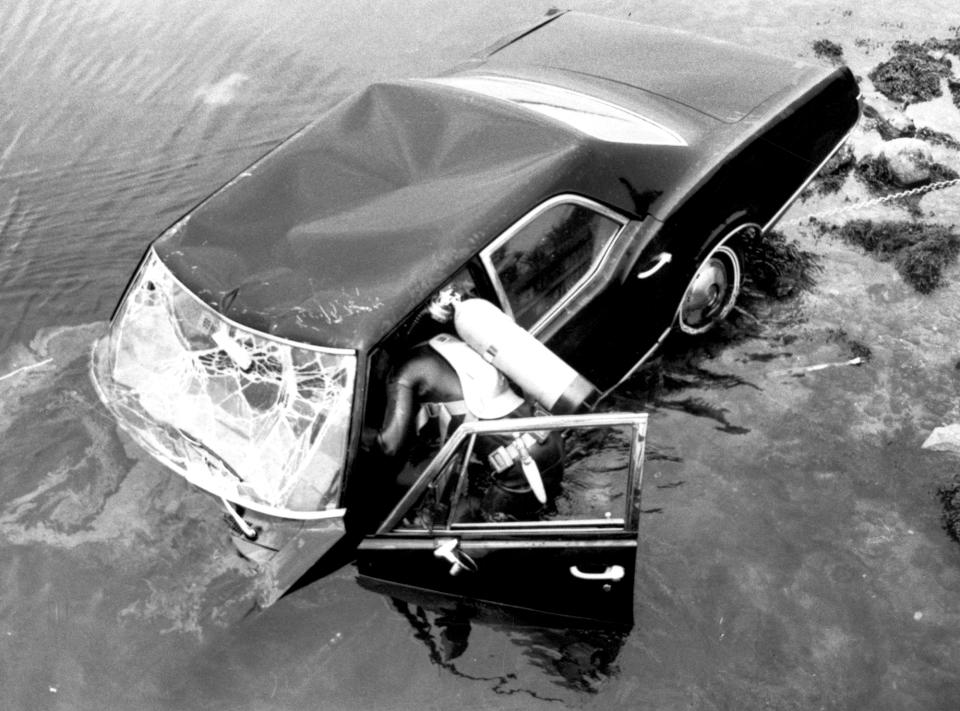
How exactly did Kopechne die?
The medical examiner found that the cause of death was drowning, but the Edgartown Fire and Rescue diver who retrieved her body said that he believed it could have been suffocation, as Kopechne had positioned herself in a pocket of air and was potentially alive for hours before running out of oxygen. The funeral director told the inquest that Kopechne had bloodstains on the back of her blouse, which were never explained. No autopsy was performed, although there were several attempts to exhume the corpse in order to complete one.
How did Kopechne’s family react to her death?
The Kopechnes initially didn’t blame Kennedy for their daughter’s death and said they would support him for president, with Mrs. Kopechne adding that she didn’t think he should give up his Senate seat. They reached a financial settlement with Kennedy for a sum that was initially reported to be in excess of $150,000 but was later said to be just over $90,000 — or $600,000 in 2018 dollars. Two decades after the accident, the Kopechnes expressed anger and frustration at Kennedy, at the media for dragging their daughter’s name “through the mud,” and at the other female RFK staffers who didn’t speak out after the incident. Kopechne’s father added that the only positive from the accident was that “Mary Jo’s death kept the senator from becoming president.”
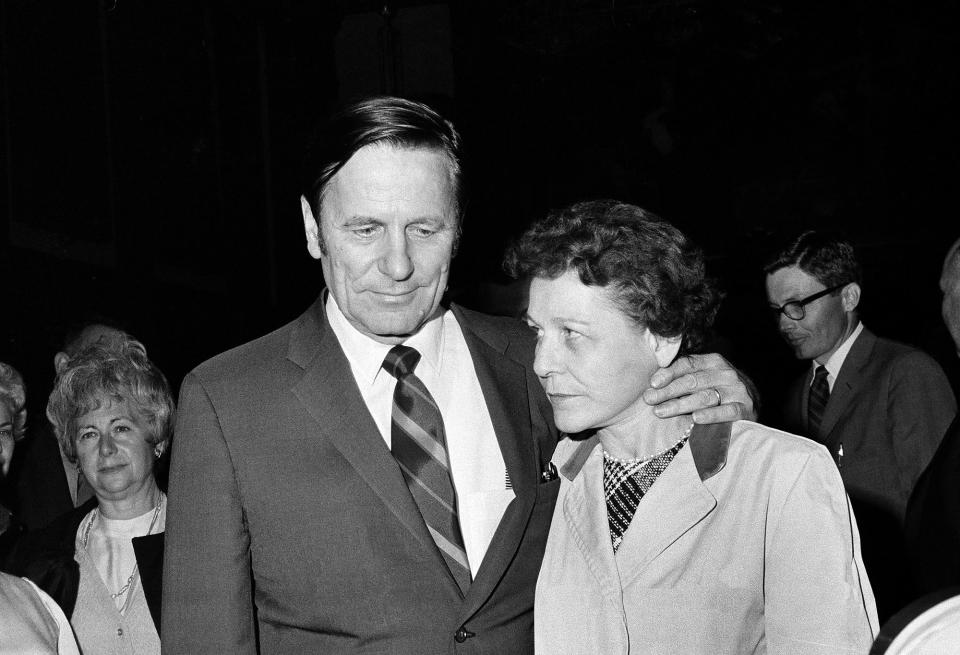
Is there any chance Kopechne was driving?
Some have suggested that Kennedy wasn’t even in the car at the time of the accident. The theory is that when Deputy Sheriff Look spotted the Oldsmobile, Kennedy panicked about being seen with Kopechne, left the car and told her to drive away and pick him up later. Unfamiliar with both the large automobile and dirt road, Kopechne crashed on her own. That would explain Kennedy’s miraculous escape (he wasn’t in the car to begin with) and his lack of injuries (people who spoke with him the next morning said he didn’t seem to be suffering the effects of the claimed concussion). There is a version of this theory that purports to explain why Kennedy didn’t report the incident until hours later — because he didn’t know it had occurred.
How accurate is the film’s depiction of the events?
Of necessity, the film takes dramatic license in depicting the behind-the-scenes maneuvers of Kennedy’s crisis-management team, including former JFK speechwriter Ted Sorensen and Secretary of Defense Robert McNamara, for which there are no undisputed public accounts. There is also the mystery of what Kennedy did during the time between the accident and showing up at the Edgartown police station. (Investigators found calls were made, but couldn’t tell to whom.) The film depicts conversations in which Kennedy tries to persuade Kopechne to take a job in his Senate office, events never described by Kennedy in public.
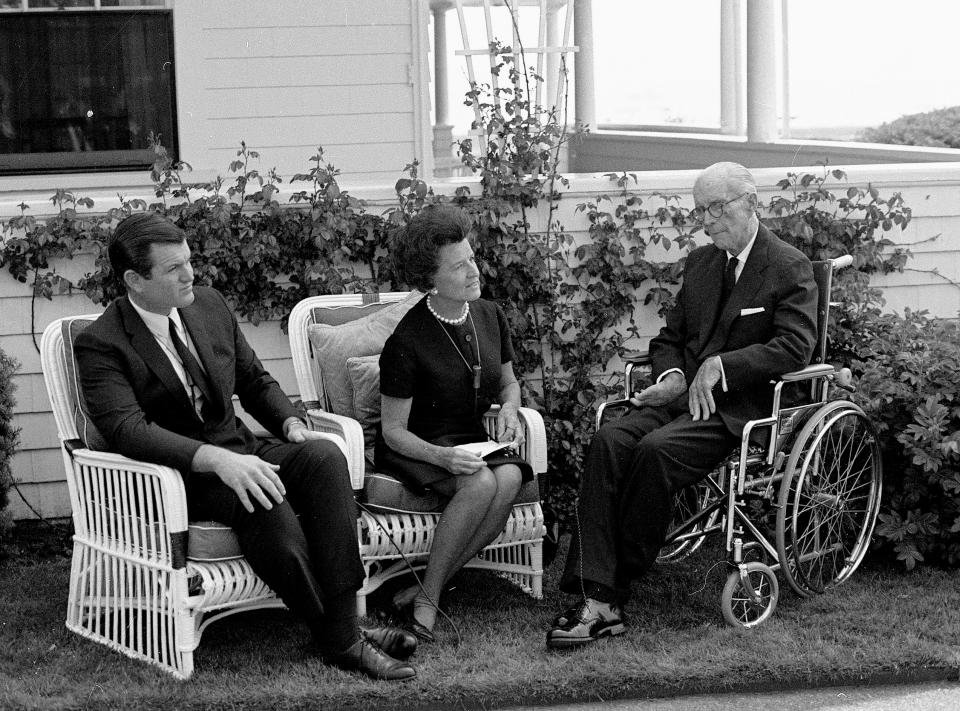
One major departure from history appears to be the film’s portrayal of Joe Kennedy Sr. (Bruce Dern), Ted Kennedy’s father. Kennedy Sr. had suffered a number of strokes and would die four months after Chappaquiddick; by most accounts he was essentially unable to communicate. But in the film he is capable of speaking limited words, writing messages to his son and at one point slapping him. The film also shows him watching his son’s primetime speech, whereas the elder Kennedy’s nurse specifically said in an interview he didn’t watch it. The film also makes some small alterations to the record as recounted by Kennedy or his confidants. Joe Gargan (Ed Helms), a cousin of the senator and one of the men who attempted to rescue Kopechne the night of the accident, confirmed Kennedy’s account that the senator swam the channel back to Edgartown after the accident. In Chappaquiddick, he is rowed over to town in a small boat by Gargan.
_____
Read more from Yahoo News:



